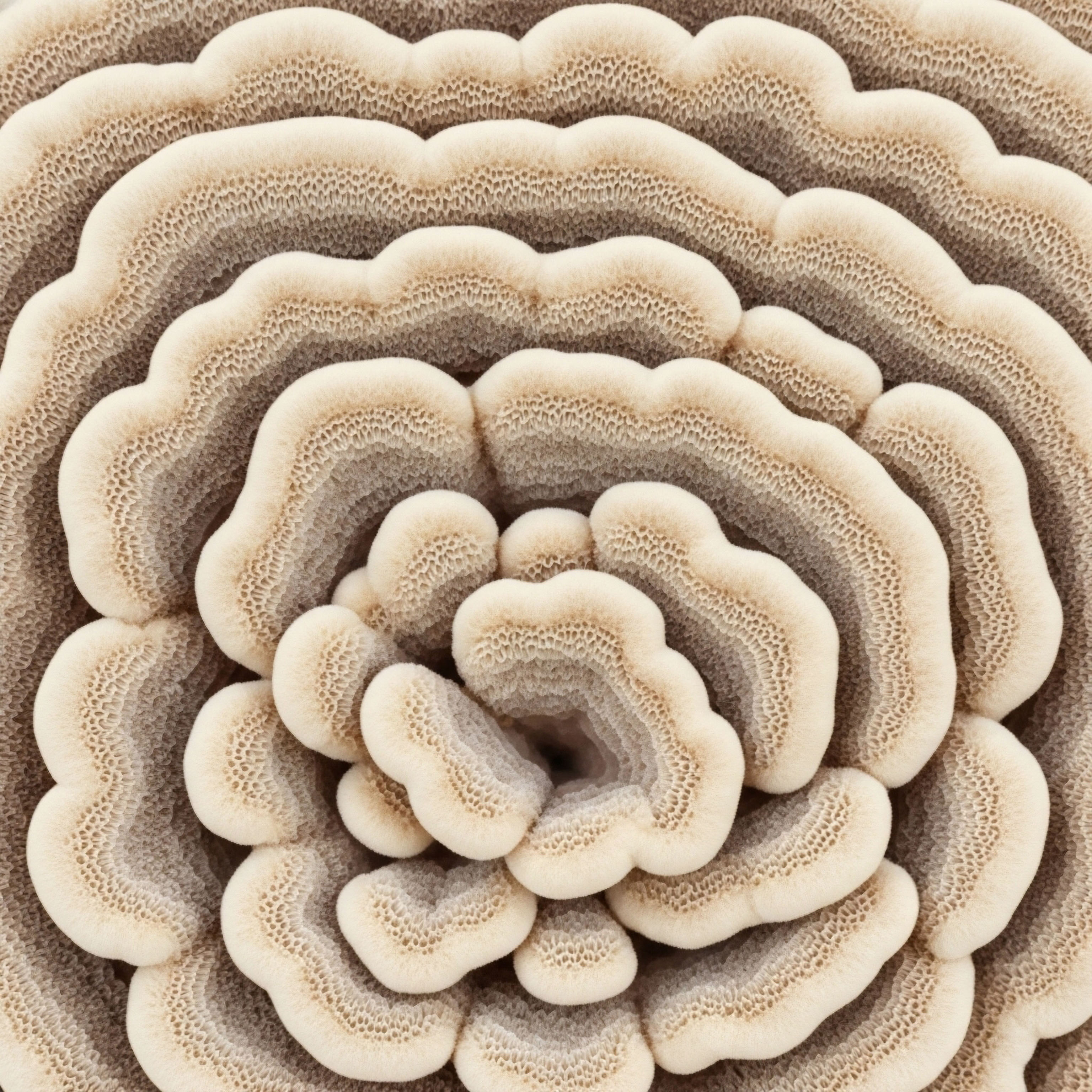

Fundamentals
Have you ever experienced those days when your energy seems to vanish, your mood shifts without warning, or your body simply does not respond as it once did? These sensations, often dismissed as typical aging or daily stress, frequently point to subtle shifts within your body’s intricate internal communication network.
Your body operates through a symphony of signals, and among the most vital messengers are peptides. These small chains of amino acids direct countless biological processes, from regulating metabolism to influencing mood and promoting tissue repair.
Consider your body as a highly sophisticated climate-controlled environment. Just as external temperature swings can affect the delicate components of a complex machine, variations in temperature can significantly impact the stability and effectiveness of these vital biological communicators. Understanding how temperature influences peptides is not merely an academic exercise; it directly relates to how well your body functions and how effective any therapeutic intervention might be.

Peptides as Biological Messengers
Peptides are short chains of amino acids, the building blocks of proteins. They serve as signaling molecules, acting like precise instructions sent throughout your body. Different peptides carry out distinct roles. Some might tell your cells to grow, others might signal for fat breakdown, and still others could influence sleep cycles or immune responses. Their ability to deliver these specific messages relies entirely on their correct three-dimensional shape.
The precise arrangement of amino acids dictates a peptide’s function. Think of it like a key fitting into a lock; the key’s shape must be exact for it to activate the cellular receptor. Any alteration to this shape can render the peptide ineffective or, in some cases, even harmful. This structural integrity is remarkably sensitive to environmental conditions, with temperature being a primary factor.
Peptides are essential biological messengers whose function depends on maintaining their specific three-dimensional structure.

Understanding Peptide Structure and Stability
Peptide structure exists on several levels, each contributing to its overall stability and function. The primary structure refers to the linear sequence of amino acids linked together. This sequence is the blueprint. The secondary structure involves local folding patterns, such as alpha-helices or beta-sheets, formed by hydrogen bonds between amino acids. These localized structures provide initial stability.
The tertiary structure describes the overall three-dimensional folding of the entire peptide chain, often forming a compact, globular shape. This level of organization is where the peptide gains its specific biological activity. For larger peptides, a quaternary structure can exist, involving the association of multiple peptide chains. Maintaining these higher-order structures is paramount for a peptide to perform its intended biological role.
When we discuss peptide stability, we are referring to its ability to maintain this correct three-dimensional structure over time and under various conditions. A stable peptide retains its functional integrity. An unstable peptide, conversely, may lose its correct shape, leading to a loss of biological activity. This loss of activity means the peptide can no longer deliver its message effectively, potentially leaving your body’s systems without the instructions they need to operate optimally.

Temperature’s Direct Influence on Peptide Form
Temperature directly impacts the kinetic energy of molecules. As temperature rises, the molecules within a peptide vibrate more vigorously. This increased motion can disrupt the delicate non-covalent bonds (like hydrogen bonds, ionic bonds, and hydrophobic interactions) that hold the peptide’s secondary and tertiary structures together. When these bonds break, the peptide begins to unfold, a process known as denaturation.
Denaturation is akin to unraveling a carefully folded piece of origami. Once unfolded, the peptide loses its specific shape and, consequently, its biological activity. Conversely, extremely low temperatures, while generally preserving structure, can also lead to issues like ice crystal formation, which can physically damage the peptide structure during freezing and thawing cycles. Finding the optimal temperature range for peptide storage and handling is therefore critical for preserving their therapeutic value.


Intermediate
Understanding the foundational principles of peptide structure and temperature sensitivity allows us to consider their practical implications, particularly within personalized wellness protocols. When therapeutic peptides are introduced into the body, their effectiveness hinges on their ability to remain stable from the moment of manufacture through administration. Temperature fluctuations during storage, transport, and preparation directly influence this stability, thereby affecting patient outcomes.
Consider the scenario of hormonal optimization protocols, such as those involving growth hormone-releasing peptides. These agents are designed to stimulate the body’s natural production of growth hormone, supporting goals like improved body composition, enhanced recovery, and better sleep. If these peptides degrade due to improper temperature management, their ability to signal the pituitary gland diminishes, rendering the protocol less effective.

Clinical Protocols and Peptide Preservation
Many therapeutic peptides, including those used in growth hormone peptide therapy, are supplied in a lyophilized, or freeze-dried, powder form. This state offers significant stability for extended periods, typically when stored at refrigerated temperatures (2-8°C) or even frozen (below -20°C). The absence of water in the lyophilized state minimizes molecular motion and chemical reactions that lead to degradation.
Once these peptides are reconstituted with bacteriostatic water, they become significantly more vulnerable to temperature-induced degradation. The presence of water allows for increased molecular mobility and facilitates chemical reactions. Reconstituted peptides generally require refrigeration and have a much shorter shelf life, often ranging from a few days to several weeks, depending on the specific peptide and its formulation.

Temperature Effects on Therapeutic Peptides
Different peptides exhibit varying degrees of temperature sensitivity. Peptides like Sermorelin, Ipamorelin, and CJC-1295, commonly used for growth hormone release, are relatively robust in their lyophilized state but degrade more rapidly once reconstituted if not kept cold. Tesamorelin, a peptide specifically approved for HIV-associated lipodystrophy, also requires careful temperature control due to its delicate structure.
Peptides like PT-141, utilized for sexual health, and Pentadeca Arginate (PDA), which supports tissue repair and inflammation modulation, also demand precise handling. Exposure to elevated temperatures can accelerate their breakdown, reducing their therapeutic impact. This degradation can manifest as a loss of potency, meaning a higher dose might be needed to achieve the same effect, or a complete loss of activity.
How Do Storage Conditions Alter Peptide Efficacy?
Reconstituted peptides are highly susceptible to temperature-induced degradation, necessitating strict cold storage to maintain their therapeutic potency.

Managing Temperature for Peptide Integrity
Maintaining the integrity of therapeutic peptides involves a systematic approach to temperature management. This begins with understanding the recommended storage conditions provided by the manufacturer, which are based on extensive stability testing. Adherence to these guidelines is not merely a suggestion; it is a direct determinant of the peptide’s clinical effectiveness.
Consider the following best practices for handling and storing peptides:
- Lyophilized Storage ∞ Keep peptides in their freeze-dried state in a refrigerator (2-8°C) or freezer (below -20°C) until ready for use. This significantly extends their shelf life.
- Reconstitution Care ∞ Reconstitute peptides using sterile bacteriostatic water, and only when prepared for immediate or near-term use.
- Refrigeration Post-Reconstitution ∞ Store reconstituted peptides immediately in a refrigerator (2-8°C). Avoid storing them in the refrigerator door, where temperature fluctuations are more common.
- Minimizing Exposure ∞ Limit the time peptides are outside of their recommended temperature range. Prepare doses quickly and return the vial to cold storage.
- Avoiding Freezing/Thawing Cycles ∞ Repeated freezing and thawing can cause physical damage to the peptide structure through ice crystal formation, even if the temperature returns to optimal.
The impact of temperature on peptide stability is a direct reflection of the underlying biochemical processes. Heat provides the energy for chemical reactions that break down the peptide structure, while cold slows these reactions. This principle guides all recommendations for peptide handling, ensuring that the molecules retain their intended shape and, consequently, their biological activity.
| Peptide State | Recommended Temperature | Stability Duration |
|---|---|---|
| Lyophilized Powder | 2-8°C (Refrigerated) | Months to Years |
| Lyophilized Powder | Below -20°C (Frozen) | Years |
| Reconstituted Solution | 2-8°C (Refrigerated) | Days to Weeks |
| Reconstituted Solution | Room Temperature (20-25°C) | Hours to Days (Degradation Accelerates) |


Academic
The molecular underpinnings of peptide stability, particularly concerning temperature, represent a sophisticated area of biochemical inquiry. Moving beyond general storage guidelines, a deeper examination reveals the specific degradation pathways influenced by thermal energy and their cascading effects on physiological systems. The integrity of therapeutic peptides, whether endogenous or exogenous, is a direct determinant of their pharmacological action and subsequent impact on metabolic and endocrine function.
Consider the intricate feedback loops within the Hypothalamic-Pituitary-Gonadal (HPG) axis, which orchestrates reproductive and hormonal balance. Peptides like Gonadorelin, a synthetic analog of Gonadotropin-Releasing Hormone (GnRH), play a precise role in this axis. If Gonadorelin’s structure is compromised by temperature, its ability to stimulate LH and FSH release from the pituitary gland is diminished, directly affecting downstream testosterone or estrogen production. This disruption underscores the critical need for molecular stability in maintaining systemic equilibrium.

Molecular Mechanisms of Thermal Degradation
Temperature fluctuations accelerate various chemical and physical degradation pathways in peptides. The primary physical mechanism is denaturation, where the peptide loses its native three-dimensional structure. This process is driven by the increased kinetic energy at higher temperatures, which overcomes the weak non-covalent interactions stabilizing the folded state.
Denaturation often exposes hydrophobic regions previously buried within the peptide core, leading to aggregation. Aggregation involves multiple denatured peptides clumping together, forming insoluble particles that are biologically inactive and can even elicit an immune response.
Chemical degradation pathways are also highly temperature-dependent. Deamidation, the removal of an amide group from asparagine or glutamine residues, is a common reaction accelerated by heat. This reaction alters the peptide’s charge and conformation, potentially reducing its binding affinity to receptors. Oxidation, particularly of methionine, tryptophan, and cysteine residues, is another significant pathway. Oxygen, often present in solutions, reacts more readily with these amino acids at elevated temperatures, forming oxidized products that can impair peptide function.
What Specific Chemical Reactions Compromise Peptide Integrity?
Elevated temperatures accelerate peptide denaturation, aggregation, deamidation, and oxidation, leading to loss of biological activity.

Impact on Endocrine and Metabolic Pathways
The stability of peptides directly influences their pharmacokinetic and pharmacodynamic profiles. A degraded peptide may have altered absorption, distribution, metabolism, and excretion characteristics. More significantly, its ability to bind to specific receptors and elicit a biological response is compromised. For instance, growth hormone-releasing peptides (GHRPs) like Ipamorelin or CJC-1295 rely on precise binding to the growth hormone secretagogue receptor (GHSR). If their structure is altered by temperature, their affinity for GHSR decreases, leading to a blunted growth hormone pulsatility.
This reduced signaling can have downstream effects on metabolic function. Growth hormone itself plays a role in lipolysis, protein synthesis, and glucose metabolism. A compromised GHRP, therefore, indirectly impacts these metabolic processes, potentially hindering fat loss, muscle gain, or metabolic recalibration efforts. Similarly, the integrity of peptides involved in insulin signaling or appetite regulation is paramount for maintaining metabolic homeostasis.
How Do Temperature-Affected Peptides Influence Systemic Balance?
| Degradation Pathway | Description | Temperature Sensitivity |
|---|---|---|
| Denaturation | Loss of native 3D structure | High (accelerated by heat) |
| Aggregation | Formation of insoluble clumps | High (often follows denaturation) |
| Deamidation | Removal of amide group from Asn/Gln | Moderate to High (pH and temperature dependent) |
| Oxidation | Reaction with oxygen (e.g. Met, Trp) | Moderate (accelerated by heat and light) |
| Hydrolysis | Cleavage of peptide bonds | Low to Moderate (accelerated by extreme pH and heat) |

Advanced Considerations for Peptide Stability
Pharmaceutical scientists employ various strategies to enhance peptide stability during formulation and storage. These include:
- Excipient Selection ∞ Adding stabilizers such as sugars (e.g. sucrose, trehalose) or polyols can protect peptides from denaturation and aggregation by forming a glassy matrix around them in lyophilized formulations.
- pH Control ∞ Maintaining the solution within an optimal pH range minimizes chemical degradation reactions like deamidation and hydrolysis.
- Buffer Systems ∞ Using appropriate buffer systems helps to resist changes in pH, thereby preserving peptide integrity.
- Packaging Materials ∞ Utilizing inert packaging materials that do not leach impurities or allow oxygen ingress can further protect the peptide.
- Controlled Release Systems ∞ Developing formulations that slowly release the peptide over time can reduce the need for frequent administration and protect the peptide from immediate degradation in the body.
The field continues to advance, with ongoing research into novel delivery systems and chemical modifications that confer greater thermal stability without compromising biological activity. For individuals utilizing therapeutic peptides, understanding these principles reinforces the necessity of adhering to prescribed storage and handling instructions. This diligence ensures that the molecular messengers retain their full capacity to communicate with your body’s systems, supporting your journey toward optimal vitality and function.

References
- Ahern, Kevin G. and Indira Rajagopal. Biochemistry ∞ A Case-Oriented Approach. Garland Science, 2017.
- Cleland, Jeffrey L. et al. “The Development of Stable Protein Formulations ∞ A Review of Protein Aggregation, Degradation, and Stabilization Strategies.” Current Pharmaceutical Biotechnology, vol. 1, no. 3, 2000, pp. 223-241.
- Daugherty, Andrew L. and Richard J. Mrsny. “Formulation and Delivery of Therapeutic Proteins.” Journal of Pharmaceutical Sciences, vol. 97, no. 4, 2008, pp. 1378-1392.
- Goodman, Louis S. and Alfred Gilman. Goodman & Gilman’s The Pharmacological Basis of Therapeutics. McGraw-Hill Education, 2017.
- Guyton, Arthur C. and John E. Hall. Textbook of Medical Physiology. Elsevier, 2020.
- Manning, Mark C. et al. “Stability of Protein Pharmaceuticals ∞ An Overview.” Pharmaceutical Research, vol. 6, no. 11, 1989, pp. 903-918.
- Remington, Joseph P. Remington ∞ The Science and Practice of Pharmacy. Pharmaceutical Press, 2021.
- Wang, Yu-Chang J. and Michael C. Hanson. Formulation, Characterization, and Stability of Protein Drugs. Springer, 2005.

Reflection
As you consider the intricate dance between temperature and peptide stability, perhaps a new perspective on your own biological systems begins to form. This knowledge is not simply about scientific facts; it is about recognizing the delicate balance within your body and the profound impact seemingly small external factors can have. Your personal health journey is a unique exploration, and understanding these fundamental principles serves as a powerful compass.
The information presented here offers a deeper appreciation for the precision required in supporting your endocrine and metabolic health. It prompts a personal inquiry ∞ how might a greater awareness of these biological sensitivities guide your choices, from how you store a supplement to how you approach your overall wellness strategy? Reclaiming vitality often begins with this kind of informed introspection, paving the way for a more intentional and effective path toward your optimal self.



